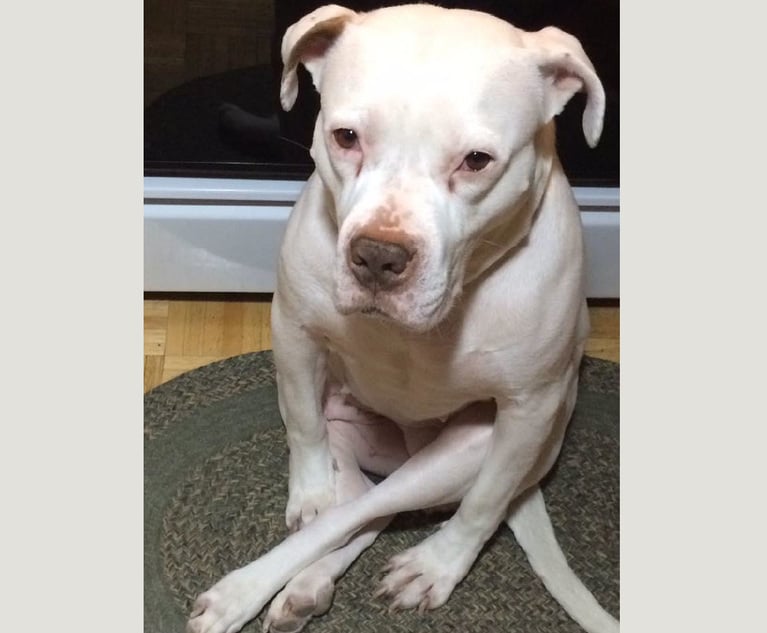Settlement Techniques: High-Low Agreements
Andrea M. Alonso and Kevin G. Faley write: High-low agreements in tort cases are underutilized and often misunderstood, but they are an effective way to prevent a runaway verdict with potential exposure of personal and corporate assets while guaranteeing plaintiff a recovery in the event of a defense verdict.
July 26, 2017 at 02:00 PM
16 minute read
The use of high-low agreements during the trial of tort cases is an often underutilized and misunderstood litigation technique that serves both parties well. From a plaintiff's perspective, a high-low agreement guarantees that a minimum monetary amount will be received regardless of the verdict. In most cases, this will result in the payment of case expenses, an award to plaintiff and a fee for the attorney in the event of a defendant's verdict.
For a defendant, it will prevent a “run-away jury” verdict, protect both a defendant from personal or corporate exposure and an insurance carrier from bad faith claims if the jury verdict exceeds the policy.
A High-Low Is a Settlement
In Cunha v. Shapiro, 42 AD3d 95 (2d Dep't 2007), the court found that a high-low agreement is a settlement for CPLR purposes, unless the provisions of the statute are expressly exempted. After a jury was selected, and prior to the presentation of evidence, the parties placed a high-low agreement on the record in open court. The parties agreed that, regardless of the verdict, the plaintiff would receive damages not less than $75,000 and no more than $325,000. The court specifically stated that “there will be no appeals or post-trial motions” and that “the case will be settled based upon the jury verdict.”
After a pre-apportionment verdict of $325,000, defendants' counsel sought a general release from plaintiff's counsel. Plaintiff's counsel stated that no release was required. Without a release, defendants refused to pay damages. Plaintiff filed a judgment for $325,000 plus interest. Defendants responded by moving by order to show cause to vacate the judgment. They argued that the parties' high-low was a settlement, displacing the jury verdict in its entirety. Without a general release, the time frame for payment pursuant to CPLR 5003 would not begin. The Second Department found that the strict enforcement of open-court stipulations of settlement served the interest of efficient dispute resolution, the management of court calendars, and the integrity of the litigation process. It ruled that the parties' agreement was a settlement and warranted the application of the general release provision of the CPLR.
Interests and Costs
A high-low agreement limits recovery to the amount awarded by the jury and also prevents additional costs such as interest and disbursements. In Vargas v. Marquis, 65 A.D.3d 1332 (2d Dep't 2009), the parties entered into a high-low agreement with parameters of $275,000/$25,000. The jury found for plaintiff in the sum of $135,000. Plaintiff entered that amount as a judgment with an additional $31,000 in pre-verdict interest and costs and disbursements. Defendant objected, arguing that the agreement waived the right to a judgment and the plaintiff was obligated to provide a stipulation of discontinuance and general release. The clerk entered the plaintiff's judgment and the Second Department granted defendant's motion to vacate, finding that the agreement was straightforward and its terms must stand. Pre-verdict interest, costs and disbursements did not apply.
The Court's Role
The court cannot alter a high-low agreement. In Esposito v. Podolsky, 104 A.D.3d 903 (2d Dept 2013, litigants in an auto accident case agreed to submit liability and damages to an arbitrator with high-low parameters of $50,000/0. Thereafter, they stipulated to proceed to arbitration regarding liability. The arbitrator found for plaintiff on the liability issue and plaintiff moved to restore the action to the trial calendar to resolve the issue of damages. The trial court directed that the parties return to arbitration, but modified the recovery amounts to $250,000, the full amount of the insurance policy and in excess of the agreed upon limits. The appellate court found that the trial court erred in allowing recovery in an amount exceeding the limits provided in the high-low agreement. Because the parties had agreed to the $50,000 limit, it should have been binding.
Jury Sheet
A high-low agreement can be valid even where there is an error on the jury instruction sheet. In Crosby v. Montefiore Medical Center, 128 A.D.3d 523, 523 (1st Dep't 2015), the parties entered into a high-low settlement during jury deliberations. The agreement set a range of $1,485,000 and $250,000. Afterwards, defendants noted an error on the verdict sheet instructions which directed the jury to determine apportionment of fault and damages, even upon a finding of no liability. The parties agreed that if the jury found no liability but proceeded to award damages, the court would enter a defense verdict. The jury returned a verdict finding that defendants had departed from the standard of care but that the departure was not a substantial factor in causing the injuries. The jury nonetheless, allocated fault and awarded the plaintiff $650,000.
This content has been archived. It is available through our partners, LexisNexis® and Bloomberg Law.
To view this content, please continue to their sites.
Not a Lexis Subscriber?
Subscribe Now
Not a Bloomberg Law Subscriber?
Subscribe Now
NOT FOR REPRINT
© 2025 ALM Global, LLC, All Rights Reserved. Request academic re-use from www.copyright.com. All other uses, submit a request to [email protected]. For more information visit Asset & Logo Licensing.
You Might Like
View All
Decision of the Day: Court Rules on Judgment Motions Over Police Killing of Pet Dog While Executing Warrant

A Primer on Using Third-Party Depositions To Prove Your Case at Trial
13 minute read
Decision of the Day: Judge Dismisses Defamation Suit by New York Philharmonic Oboist Accused of Sexual Misconduct

Court of Appeals Provides Comfort to Land Use Litigants Through the Relation Back Doctrine
8 minute readTrending Stories
- 1Uber Files RICO Suit Against Plaintiff-Side Firms Alleging Fraudulent Injury Claims
- 2The Law Firm Disrupted: Scrutinizing the Elephant More Than the Mouse
- 3Inherent Diminished Value Damages Unavailable to 3rd-Party Claimants, Court Says
- 4Pa. Defense Firm Sued by Client Over Ex-Eagles Player's $43.5M Med Mal Win
- 5Losses Mount at Morris Manning, but Departing Ex-Chair Stays Bullish About His Old Firm's Future
Who Got The Work
J. Brugh Lower of Gibbons has entered an appearance for industrial equipment supplier Devco Corporation in a pending trademark infringement lawsuit. The suit, accusing the defendant of selling knock-off Graco products, was filed Dec. 18 in New Jersey District Court by Rivkin Radler on behalf of Graco Inc. and Graco Minnesota. The case, assigned to U.S. District Judge Zahid N. Quraishi, is 3:24-cv-11294, Graco Inc. et al v. Devco Corporation.
Who Got The Work
Rebecca Maller-Stein and Kent A. Yalowitz of Arnold & Porter Kaye Scholer have entered their appearances for Hanaco Venture Capital and its executives, Lior Prosor and David Frankel, in a pending securities lawsuit. The action, filed on Dec. 24 in New York Southern District Court by Zell, Aron & Co. on behalf of Goldeneye Advisors, accuses the defendants of negligently and fraudulently managing the plaintiff's $1 million investment. The case, assigned to U.S. District Judge Vernon S. Broderick, is 1:24-cv-09918, Goldeneye Advisors, LLC v. Hanaco Venture Capital, Ltd. et al.
Who Got The Work
Attorneys from A&O Shearman has stepped in as defense counsel for Toronto-Dominion Bank and other defendants in a pending securities class action. The suit, filed Dec. 11 in New York Southern District Court by Bleichmar Fonti & Auld, accuses the defendants of concealing the bank's 'pervasive' deficiencies in regards to its compliance with the Bank Secrecy Act and the quality of its anti-money laundering controls. The case, assigned to U.S. District Judge Arun Subramanian, is 1:24-cv-09445, Gonzalez v. The Toronto-Dominion Bank et al.
Who Got The Work
Crown Castle International, a Pennsylvania company providing shared communications infrastructure, has turned to Luke D. Wolf of Gordon Rees Scully Mansukhani to fend off a pending breach-of-contract lawsuit. The court action, filed Nov. 25 in Michigan Eastern District Court by Hooper Hathaway PC on behalf of The Town Residences LLC, accuses Crown Castle of failing to transfer approximately $30,000 in utility payments from T-Mobile in breach of a roof-top lease and assignment agreement. The case, assigned to U.S. District Judge Susan K. Declercq, is 2:24-cv-13131, The Town Residences LLC v. T-Mobile US, Inc. et al.
Who Got The Work
Wilfred P. Coronato and Daniel M. Schwartz of McCarter & English have stepped in as defense counsel to Electrolux Home Products Inc. in a pending product liability lawsuit. The court action, filed Nov. 26 in New York Eastern District Court by Poulos Lopiccolo PC and Nagel Rice LLP on behalf of David Stern, alleges that the defendant's refrigerators’ drawers and shelving repeatedly break and fall apart within months after purchase. The case, assigned to U.S. District Judge Joan M. Azrack, is 2:24-cv-08204, Stern v. Electrolux Home Products, Inc.
Featured Firms
Law Offices of Gary Martin Hays & Associates, P.C.
(470) 294-1674
Law Offices of Mark E. Salomone
(857) 444-6468
Smith & Hassler
(713) 739-1250






